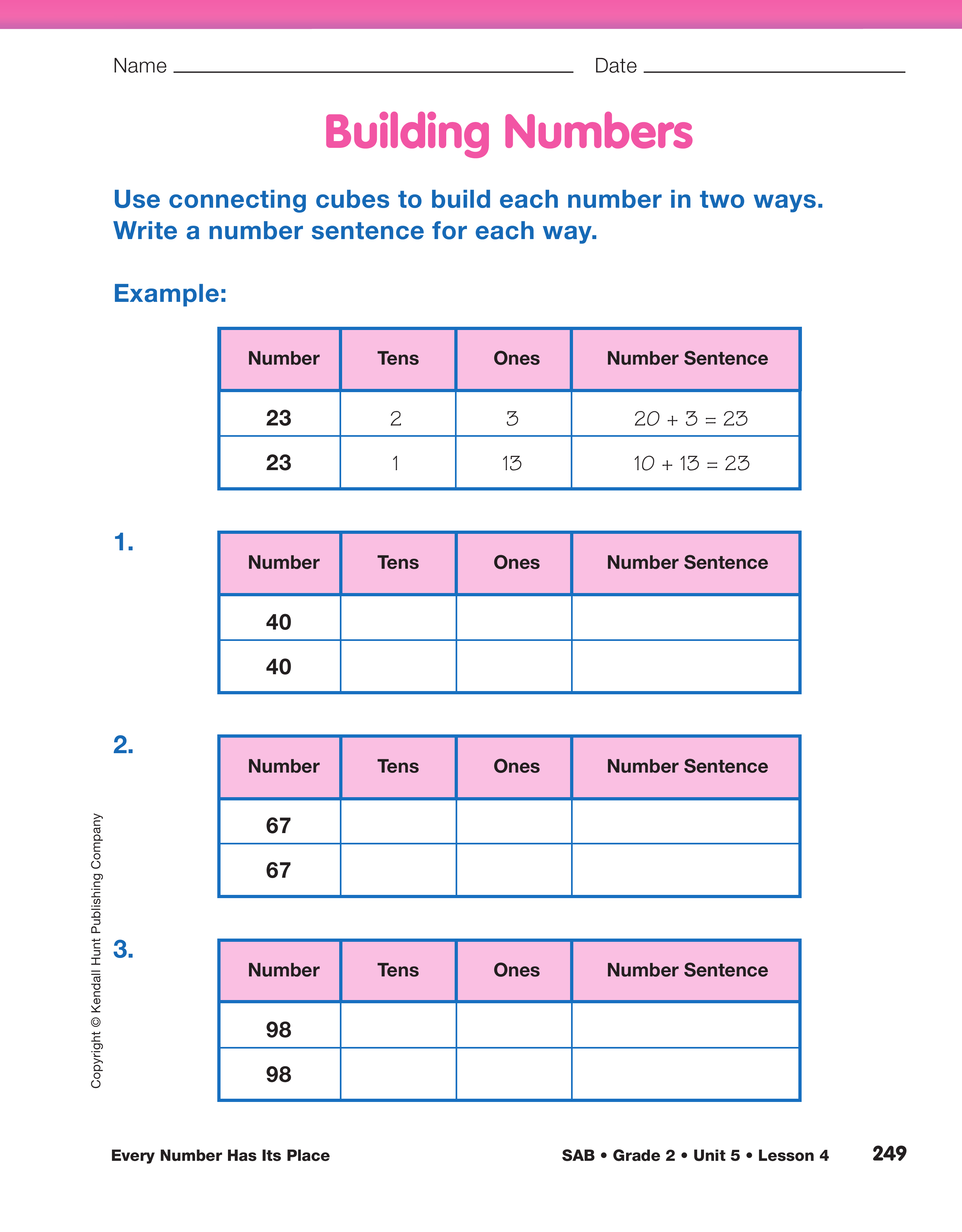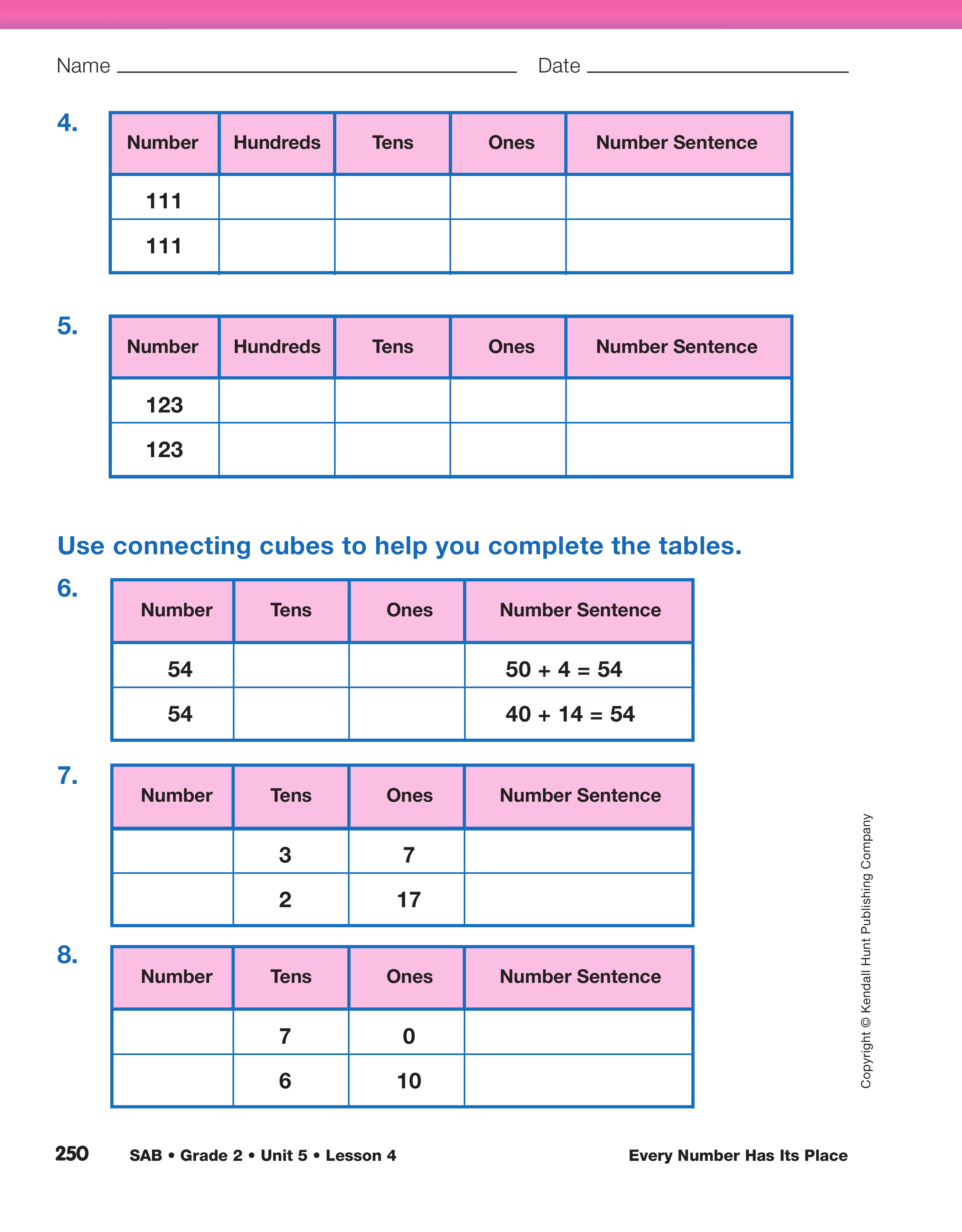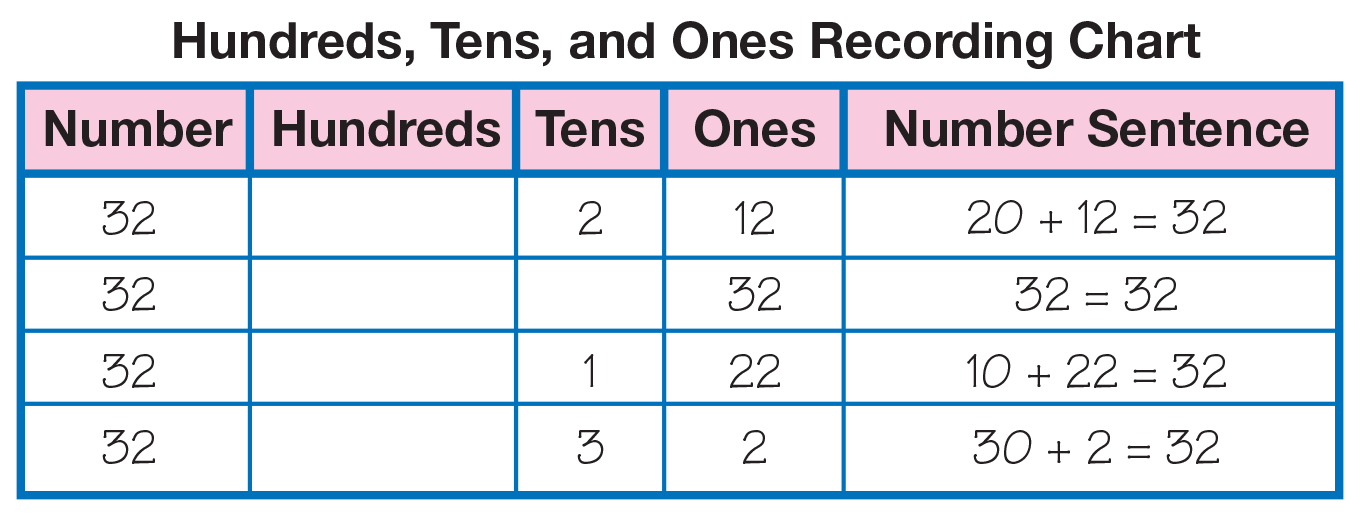Every Number Has Its Place
Est. Class Sessions: 2Developing the Lesson
Part 2: Representing Partitions of Two- and Three-Digit Numbers
Distribute connecting cubes to student groups. The size of each student group will be determined by the number of students in the class and the number of connecting cubes. Each student group needs about 200 connecting cubes.
Ask students to represent 32 with the connecting cubes. Give students time to answer the following question:
The following are possible combinations:
- 32 ones
- 22 ones and 1 stack of ten
- 12 ones and 2 stacks of ten
- 2 ones and 3 stacks of ten
Discuss the words ones, tens, and hundreds. Tell students that instead of using the word leftovers, they will use the word ones. Instead of using the phrase stacks of ten, they will call them tens, and instead of using bundles of hundreds, they will call them hundreds.
Display the Hundreds, Tens, and Ones Recording Chart Master. As students volunteer a representation for 32, ask students how you can write a number sentence that reflects that representation. See Figure 1 for possible ways of representing 32 and writing the matching number sentences.
Ask:
Next, ask:
The following are just some of the possible combinations:
- 1 hundred, 4 tens, and 5 ones
- 145 ones
- 14 tens and 5 ones
- 13 tens and 15 ones
- 12 tens and 25 ones
Ask students how you can write a number sentence for each representation on the display of the Hundreds, Tens, and Ones Recording Chart Master. See Figure 2.
Ask:
Use the Building Numbers pages in the Student Activity Book and ask students to represent the numbers 40, 67, 98, 111, and 123. In Questions 1–5 students build a number with connecting cubes, record their work, and write a number sentence to reflect the way they constructed the number. Then students are asked to build the same number in a different way, record their work, and to write a number sentence that reflects the second way they constructed the number.
After students have worked through Questions 1–5, ask a volunteer to show on the board or chart paper how he or she constructed 123 and to write the number sentence (Question 5). Ask at least two other students to show how they constructed 123 in a different way and to write their number sentences. Students should be continually encouraged to use their connecting cubes to respond to this activity.
Ask:
For Question 6, students are given the number 54 and two number sentences showing partitions of 54. They are asked to write the number of tens and ones reflected in the number sentences. Students are also given two examples in Questions 7–8 where the number of tens and ones are given, and they are asked to write a number sentence that reflects the numbers given.
Upon completion, direct students' attention to Question 7 and discuss.
Write 2 tens and 17 ones on a blank display of the Hundreds, Tens, and Ones Recording Chart Master.
Ask:
Try it with another number, for example, 220. Write 1 hundred, 12 tens, 0 ones on the chart. Repeat the above questions.
Then ask:
Write a number sentence on the chart: 100 + 3 = 103.
Ask:


















